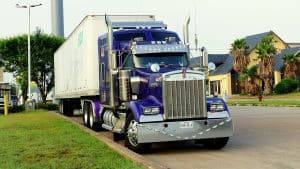Flying Cars Might Soon Take Off in Urban Skies
Imagine being able to fly around in a car, bypassing all the traffic and congestion on the roads below. It may sound like something out of a science fiction movie, but with recent advancements in technology, flying cars might soon become a reality in our urban skies. This game-changing innovation has the potential to revolutionize the way we travel and could drastically improve our daily commute. Let’s take a closer look at how flying cars might soon take off in urban skies and how it could impact our lives.
The Rise of Flying Cars
For years, flying cars have been a distant dream, with many attempts at creating these futuristic vehicles falling short. However, recent developments in the technology industry have brought us closer to making this fantasy a reality. With companies like Uber, Google, and Airbus working on developing flying cars, it’s only a matter of time before they hit the skies.
The Advantages of Flying Cars in Urban Areas
The biggest advantage of flying cars in urban areas is the reduction of traffic congestion. These vehicles can bypass congested roads and take a more direct route to their destination, saving commuters valuable time. Additionally, flying cars can also help reduce emissions by eliminating the need for cars to idle in traffic. This could have a significant impact on air pollution, especially in densely populated cities.
Another benefit of flying cars is their versatility. They can take off and land vertically, meaning they can access locations that are not easily accessible by road. This could be particularly useful in emergency situations or for remote areas that are difficult to reach.
The Challenges of Implementing Flying Cars in Urban Areas
While the idea of flying cars may be exciting, it’s also important to consider the challenges that come with them. One of the biggest concerns is safety. The thought of hundreds of flying cars navigating through the sky may sound chaotic, but companies are working on implementing strict regulations and safety features to avoid any potential accidents.
Another challenge is the infrastructure required for flying cars to operate. In order for this mode of transportation to become a reality, there needs to be a designated airspace for flying cars to travel in. This would require a significant amount of planning and investment from government authorities.
The Impact on Urban Life
If flying cars do take off in urban skies, it will have a significant impact on our daily lives. The reduction in traffic congestion and emissions would lead to a more efficient and environmentally friendly mode of transportation. It could also open up new job opportunities in industries such as aviation and engineering.
However, some experts argue that flying cars may only be accessible to the wealthy and could potentially widen the gap between the rich and the poor. It’s important for companies and authorities to consider this and work towards making flying cars accessible to everyone.
The Road Ahead for Flying Cars
While flying cars may still seem like a distant dream, many experts believe that they could become a reality within the next decade. Companies are constantly making advancements in technology and safety measures to make this mode of transportation a viable option for urban areas.
Regulations and laws are also being developed to ensure flying cars can safely navigate through the skies without causing any disruption. With all the progress being made, it’s only a matter of time before we see flying cars soaring through our urban skies.
Conclusion
Flying cars might soon take off in urban skies, bringing about a new era of transportation. While there are certainly challenges and concerns that need to be addressed, the potential benefits of this innovation are undeniable. It’s an exciting time for technology, and the idea of flying cars becoming a reality could truly change the way we live and commute in urban areas.











